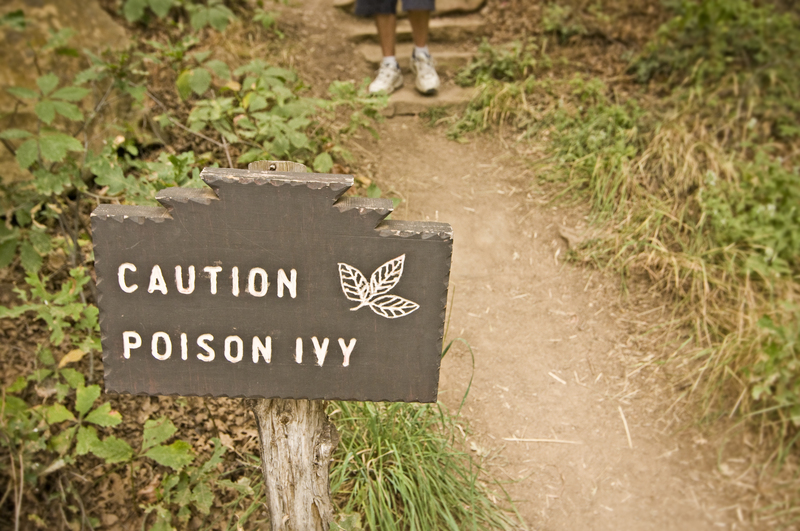Navigate the World of Weed Control with These 3 Tips
Posted on 04/09/2025
Navigate the World of Weed Control with These 3 Tips
Weeds are a persistent foe in gardens, lawns, and agricultural fields. Mastering weed management not only saves your plants and crops but also enhances the appearance and productivity of your green spaces. If you're looking to take charge and maintain a vibrant, weed-free landscape, you're in the right place. This comprehensive guide will help you navigate the world of weed control by sharing effective tips, strategies, and the latest insights on how to outsmart these pesky invaders.

Understanding the Importance of Weed Control
Before we dive into actionable steps, it's important to understand why weed control matters. Weeds compete with your desirable plants for water, nutrients, and sunlight. If left unchecked, these unwanted plants can quickly overwhelm your garden or lawn, resulting in poor plant growth, unattractive landscapes, and reduced crop yields. Additionally, some weeds are hosts for pests and diseases, creating long-term maintenance issues. Effectively managing weeds is crucial for anyone who wants a thriving, healthy outdoor space.
3 Essential Tips for Effective Weed Management
Ready to reclaim your property? Let's explore the top three weed control tips that will set you on the path to a more manageable and beautiful garden or lawn!
1. Prevention: Stop Weeds Before They Start
When it comes to weed control, prevention is the most sustainable and least labor-intensive strategy. By creating conditions that discourage weed growth, you can save yourself time and effort down the road.
- Apply Mulch: Use organic mulch (such as bark, straw, or compost) or inorganic mulch (like black plastic sheeting) to create a protective barrier over your soil. Mulch prevents weed seeds from receiving the sunlight they need to germinate and makes it harder for them to take root.
- Landscape Fabric: For long-term garden beds, install weed barrier fabric beneath mulch or gravel. This method blocks weeds while allowing air and water to reach your plants' roots.
- Maintain a Dense Plant Cover: Don't leave bare patches in your lawn or planting beds. Healthy, closely spaced plants shade the soil and crowd out competing weeds, drastically reducing their ability to grow.
- Edge Your Garden: Physical barriers like steel, plastic, or stone edging can keep invasive grasses and weeds from creeping into your cherished spaces.
Pro Tip: Prevention is particularly important in early spring, as this is when many weed seeds germinate. A little planning now can spare you hours of labor later!
2. Cultural and Manual Weed Control Methods
Successful gardeners and landscapers know that a weed-free environment doesn't just happen by accident. Combining manual weeding with strategic gardening practices is often the most effective way to keep weeds at bay.
- Hand Pulling: While it might be labor-intensive, manually removing weeds (especially after rain when the soil is loose) ensures you extract the roots as well as the foliage. This method is ideal for smaller gardens or isolated weed outbreaks.
- Hoeing and Cultivating: For larger areas, use a hoe or cultivator to chop off weeds at the soil line. It's best to disturb the soil as little as possible to avoid bringing more weed seeds to the surface.
- Regular Lawn Mowing: Keeping your grass at the recommended height makes it tougher for weed seeds to access sunlight and establish themselves. For most turfgrasses, a height of 2.5 to 3.5 inches is ideal for crowding out weeds.
- Crop Rotation and Cover Cropping: In vegetable beds, rotating crops each season prevents weeds that favor a particular plant from gaining a foothold. Cover crops such as clover or rye can also smother weeds and enrich the soil between growing seasons.
Integrated weed management is all about using several methods in harmony. Regular care and vigilance are your best assets when tackling stubborn weeds.
3. Use of Safe & Targeted Weed Control Products
Sometimes, despite your best cultural and manual efforts, chemical or organic weed control products may be necessary. The key is to use them safely and sparingly, always following label instructions.
- Selective vs. Non-Selective Herbicides: Use selective herbicides for targeting weeds within lawns without harming grass. For paths, driveways, or areas awaiting replanting, non-selective herbicides may be appropriate.
- Organic Solutions: Vinegar-based sprays, boiling water, or salt solutions are popular for organic weed control. They're especially suitable for patios or walks, but be careful, as these can harm desirable plants as well.
- Spot Treatment: Instead of broadcasting chemicals, apply them directly to problem areas. This minimizes both chemical use and impact on non-target plants.
- Corn Gluten Meal: This organic product acts as a pre-emergent, inhibiting seed germination. It's a safe choice for lawns aiming to limit weed seed establishment.
Note: Always use protective clothing and carefully read product labels. Never apply weed control chemicals before rain or near waterways, as runoff can cause environmental harm.
Common Weeds and How to Identify Them
A crucial part of effective weed management is learning to recognize common weeds in your area. Early identification helps you apply the right technique before weeds become deeply established. Here are a few widespread offenders:
- Dandelion (Taraxacum officinale): Rosette-forming, with yellow flowers and deep taproots. Pull when young for best results.
- Crabgrass (Digitaria spp.): Low-growing grass with wide leaves and sprawling habit. Prevent with thick lawns and pre-emergent treatments.
- Bindweed (Convolvulus arvensis): Twining vine with arrow-shaped leaves and white to pink trumpet flowers, very persistent and difficult to eradicate.
- Creeping Charlie (Glechoma hederacea): Ground-hugging perennial with scalloped leaves and purple blooms, thrives in shady lawns.
Expert Tip:
Carry a field guide or use mobile plant identification apps to become familiar with weed species specific to your climate and region.
Avoiding Common Mistakes in Weed Control
Even experienced gardeners accidentally make errors that can increase weed problems. Understanding what not to do is as important as knowing the right approach:
- Over-tilling: While tilling can bury existing weeds, it also brings dormant weed seeds closer to the surface where they can sprout. Minimize disturbance of soil when possible.
- Improper Mowing: Cutting your grass too short ('scalping') stresses your lawn and opens the door to aggressive weeds.
- Neglecting Edges: Most weeds encroach from lawn and bed edges. Constant vigilance at boundaries pays off.
- Using the Wrong Product: Applying the wrong herbicide can damage your plants or fail to target the weeds you're battling. Research and double-check product compatibility.
Long-Term Benefits of Strategic Weed Control
Effective weed management delivers far-reaching payoffs. Here's what you can expect:
- Better Plant Growth: Lawns and gardens flourish with improved access to water and nutrients.
- Healthier Soil: Fewer weeds mean less competition and fewer pests and diseases.
- Time & Cost Savings: Persistent control reduces the number of interventions year after year.
- Aesthetics and Property Value: Well-kept landscapes are pleasing to the eye and can increase home value.
Frequently Asked Questions about Weed Control
How often should I apply weed control products?
The frequency depends on your region, the types of weeds, and the control product used. Always follow product recommendations. Typically, pre-emergent products are used in early spring, while post-emergents are applied as visible weeds appear.
Are organic weed control methods as effective as chemicals?
Organic methods can be very effective, especially when integrated with other techniques. However, they may require more frequent applications and a combination of manual removal and prevention strategies for best results.
Is it possible to have a completely weed-free garden?
While total eradication is a lofty goal, it's not practical or ecologically necessary. Aim instead for managing weeds so they don't outcompete your desired plants. Learn to tolerate a few weeds rather than use aggressive, non-sustainable techniques.

Conclusion: Take Charge and Outsmart Weeds
Navigate the world of weed control with these three detailed tips, and you'll be well on your way to enjoying a more manageable, vibrant, and healthy outdoor environment. By prioritizing prevention, using a combination of manual and cultural techniques, and applying targeted products only when necessary, you'll transform your battle with weeds from a losing struggle to a success story. Remember, vigilance and proactive care are the foundations of every flourishing landscape.
Ready to Get Started? Take These Steps Today!
- Inspect your garden and lawn for early weed growth.
- Apply mulch and maintain dense, healthy plant coverage.
- Identify weeds and use the most effective removal techniques.
- Stay consistent - regular care is the ultimate weed control tool!
Armed with these expert, actionable tips, you can master weed management and keep your property looking its very best all season long.



